
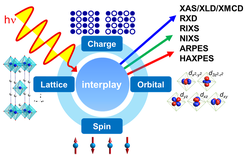
The group performs x-ray absorption spectroscopy (XAS) with linear (XLD) and circular polarized light (XMCD) as well as resonant x-ray diffraction (RXD), resonant (RIXS) and nonresonant inelastic x-ray scattering (NIXS), plus angle resolved (ARPES) and hard x-ray photo emission spectroscopy (HAXPES) on bulk and thin film materials of 3d, 4d transition metal and rare earth compounds.
Hu, Chang, Haverkort, Tjeng
1. Correlation between grounds state and orbital anisotropy in heavy fermion materials [Willers et al. PNAS 112, 2384 (2015), doi: 10.1073/pnas.1415657112]
The interplay of structural, orbital, charge, and spin degrees of freedom is at the heart of many physical phenomena, including superconductivity. Unravelling the underlying forces requires the understanding of each of these degrees of freedom as well as the interplay between them. Cerium-based heavy fermion compounds are an ideal playground for investigating these interdependencies, and we recently were able to show a correlation between the orbital anisotropy and the ground states in a representative family of materials.
The 4f crystal-electric field ground-state wave functions of the strongly correlated materials CeRh1−xIrxIn5 was measured with great accuracy using linear polarization-dependent soft X-ray absorption spectroscopy (XAS) and it turned out these wave functions correlate with the ground-state properties of the substitution series. This material was chosen because the phase diagram of CeMIn5, with M= Co, Rh, and Ir, covers long-range antiferromagnetic order, unconventional superconductivity, and coexistence of these two states (see Figure) as well as Fermi surface changes when substituting one M element for another, thus making it an important model system for searching parameters that correlate with ground state properties. We found that the 4f ground state orbital elongates increasingly in c-direction (long tetragonal axis) when going from the antiferromagnetic to the superconducting region, but not in a linear manner (see red dots in figure below). The purely magnetic (purely superconducting) regions clearly prefer the shorter (elongated) orbitals. We could rule out trivial lattice effects because the orbital extension anticorrelates with the lattice expansion when substituting Rh with Ir in CeRh1-xIrIn5. The conclusion drawn from this study is that orbital anisotropy and/or hybridization are important aspects that should be taken into account when modelling these materials.
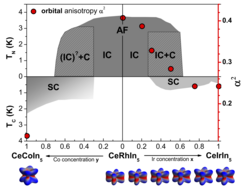
Phase diagram of CeMIn5 compounds; SC stands for superconductivity and (IC)C AF for (in)commensurate antiferromagnetism. The red dots quantify the orbital anisotropy a2; here a gives the amount of Jz=5/2 in a G7 wave function of Ce in a tetragonal environment. The size of the dots is representative for the accuracy.
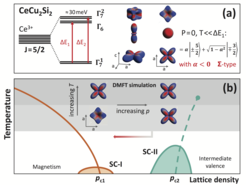
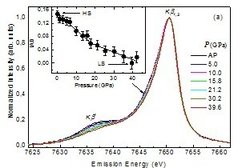
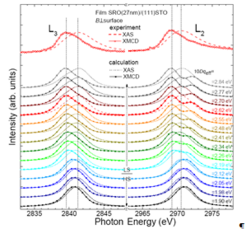
Experimental (top) and simulated (bottom) Ru L2,3 X-ray absorption (XAS) and x-ray magnetic circular dichroism (XMCD) spectra. The latter theoretical spectra show a transition from the S=2 high spin (HS) to the S=1 low spin (LS) state of the Ru atoms as a function of the crystal field. The best agreement between experiment and theory is obtained for a Ru crystal field strength of 2.62 eV (solid and dotted red lines).
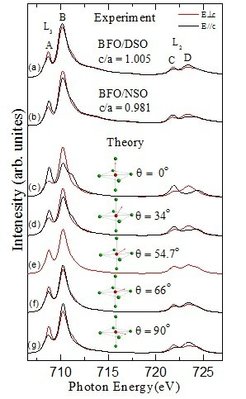
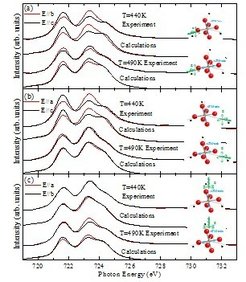
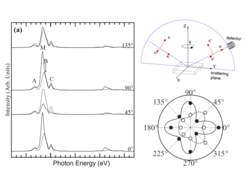
Theoretical energy and polarization dependence of the (001/2)c reflection intesities for varioius azimuth angles with the COO state with P2/c symmetry in the initial srtate. One the right, the polar plot of Fe L3 maximum peak as a function of azimuth angle from the theory is compared with the experimental one from a thin layer of magnetite partially detwined by growth on the stepped MgO (001) substrates.







